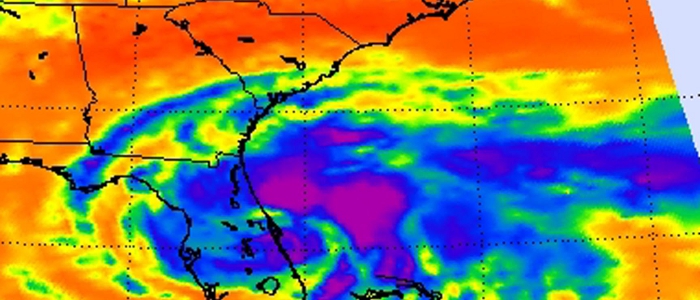PhD Defense: Decadal Gridded Hyperspectral Infrared Record for Climate
Ph.D. Thesis Defense Announcement
A Decadal Gridded Hyperspectral Infrared Record for Climate
Sep 1st 2002 – Aug 31st 2012
David Chapman
2:00pm 20 November 2012, ITE 325B
We present a gridded Fundamental Decadal Data Record (FDDR) of Brightness Temperatures (BT) from the NASA EOS Atmospheric Infrared Sounder (AIRS) from ten years of hyperspectral Infrared Radiances onboard the NASA EOS Aqua satellite. We show that these results are consistent with the expected greenhouse forcings, and also discovered a drift of ~0.13K/decade in spectrum relative to 4 MODIS-Aqua for Global All-sky Brightness Temperatures. AIRS, operational on September 1, 2002 is the first successful hyperspectral satellite weather instrument of more than 1 year, as well as the longest running global IR hyperspectral measurement. Although global surface temperature data records are available for over 130 years, it was not until 1978 when the Microwave Sounding Unit (MSU) was the first instrument series to reliably monitor long-term trends of the upper atmosphere. The Atmospheric Infrared Sounder (AIRS) provides the first continuous global hyperspectral IR radiance data record from a single satellite for a decade. Our contribution, was to prepare a gridded data record from the AIRS Outgoing Longwave Spectrum (OLS). We have shown high correlations with the GISS global surface air temperatures as well as with the NOAA ONI index of El Niño phase. In addition, we have performed inter-annual inter-comparisons with the Moderate Resolution Spectroradiometer (MODIS) on the same satellite to examine the relative consistency of their calibrations. The comparisons of the two instruments for the 4µ spectral channels indicate an inter-annual warming of 0.13K per decade of AIRS more than MODIS. This relative decadal drift is small relative to inter-annual variability but on the order of historic surface temperature trends. In the 12µ window channels we see a relative constant difference of 0.01K over a decade. It is convenient to observe the climate variability by using monthly average lat-lon grid projections. The polar orbiting data projection to a lat-lon grid is a lossy process that invariably introduces aliasing artifacts and noise. We observed an exponential decay between the number of days averaged and the expected noise due to gridding. We have extended the Observation Coverage (Obscov) gridding algorithm, developed for the MODIS instrument that incorporates the Point Spread Function (PSF) and we show the Obscov gridding algorithm reduces the aliasing noise from AIRS grids by nearly 40% by comparing the spatial correlation of gridded MODIS IR data. We also show that the use of a circular approximate PSF is a sufficient representation to obtain the noise reduction of Obscov at the climate resolution 0.5×1 degree monthly average grids. We extended these spatial sampling methods to the AIRS Level 3 retrieval records for which quality filtering due to opaque clouds is an additional spatial sampling challenge. We correct for an observed dry bias in the AIRS Level 3 monthly average gridded moisture retrieval records by means of spatial interpolation with the Nearest Neighbor (NN) strategy.
Thesis Committee:
- Dr. Milton Halem (Chair)
- Dr. Yelena Yesha
- Dr. Chin-I Chang
- Dr. Shujia Zhou
- Dr. Joel Susskind (NASA Goddard)
Posted: November 15, 2012, 10:56 AM
